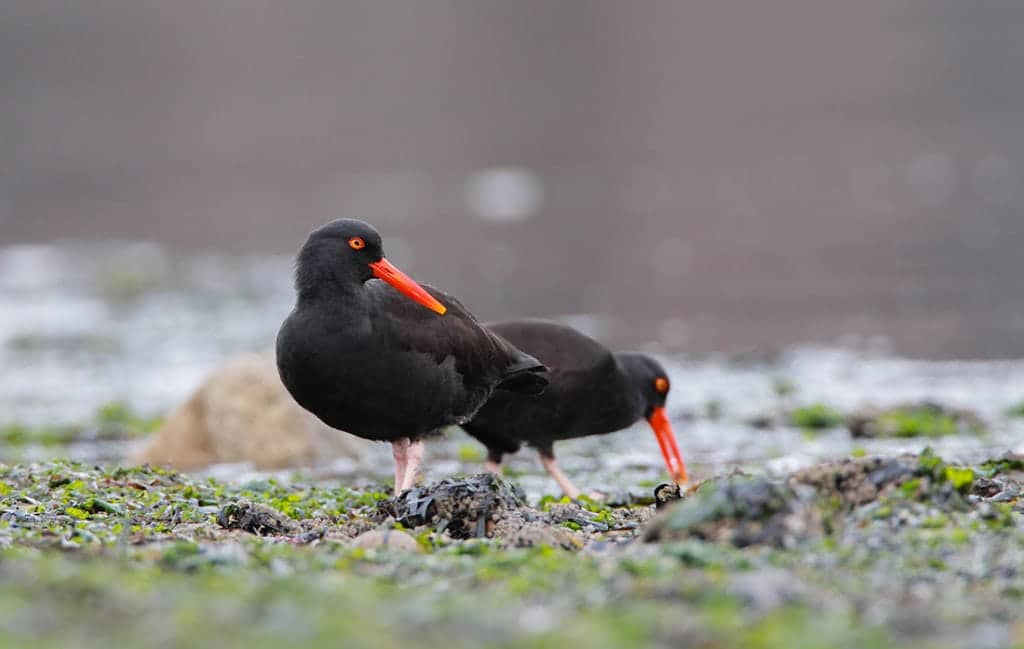
Anyone who lives or visits the beautiful rocky habitat on Oregon’s coast is likely to have seen this unique looking bird. About the size of a crow, this black shorebird has a distinct long orange beak, pink legs, and a feisty demeanor during the summer breeding season. Despite its name they do not eat oysters but instead eat other shellfish like mussels and limpets. Oystercatchers are inextricably tied to rocky shore and intertidal habitats which support important populations of other coastal marine life and make up more than 40% of Oregon’s coastline.
While the Black Oystercatcher has a conspicuous presence on our coast, little demographic information has been accumulated about it in recent years. In 2015, Bird Alliance of Oregon and partners including the U.S. Fish and Wildlife Service, coordinated a statewide survey for this bird with the intention of obtaining an updated population estimate and learning more about their distribution along the coast. In their new study published in Northwest Naturalist, they estimate the population to be approximately 500-600 birds. In addition, the study documents the birds are most prevalent on the south coast.
Lead author, Joe Liebezeit, Staff Scientist at Bird Alliance of Oregon said, “We are learning new information about this fascinating but vulnerable bird so we can better protect it and its remaining breeding habitat”.
This study relied on community scientists, ordinary members of the public that have been instrumental in monitoring these birds in the summertime. “We’re fortunate to have volunteers and partners able to help with data collection,” said Shawn Stephensen, U.S. Fish and Wildlife Biologist and partner on the project. “Having this information is important for us as we manage the Oregon Islands National Wildlife Refuges, which provides key habitat for black oystercatchers and many other iconic birds on the Oregon Coast.”
Diane Bilderback, long-time oystercatcher community scientist based out Bandon said, “It’s great to get outside, go bird watching, and collect information on Black Oystercatchers that will help us better understand how we can help them.”
This study is timely as Oregon is currently updating its Rocky Habitat Management Plan which will guide the management of Oregon’s rocky shorelines which have experienced increasing human use, primarily during the summer tourist season, and which are already feeling the brunt of climate change related impacts like ocean acidification. This planning process calls for members of the public to submit “site proposal designations” that can add, delete, or amend current rocky habitat protections on the coast.
“There is a lot of attention right now on the rocky habitat plan and the opportunity for the public to get involved and have a real say in helping protect important habitats on the coasts” said Dawn Villaescusa, President of the Bird Alliance of Oregon Society of Lincoln City and project partner.
Black Oystercatcher monitoring on Oregon’s Coast will continue but now the focus will be on carefully monitoring oystercatcher nests to determine productivity – how many of the hatchlings survive. Elise Elliott-Smith, biologist at the U.S. Geological Survey and project partner says “Understanding nest productivity will be another important piece in putting together the demographic puzzle for this species in our effort to protect it.”



